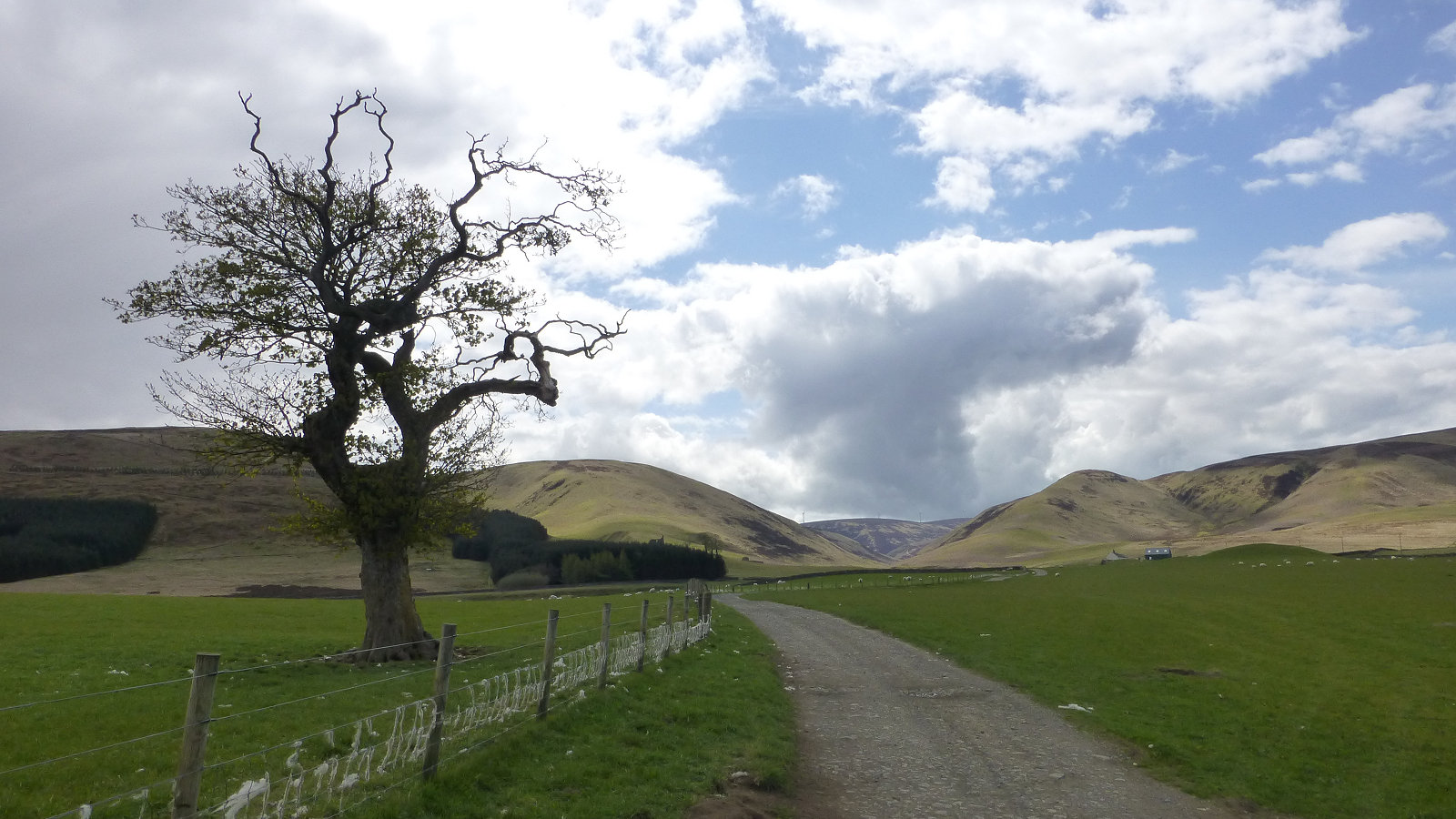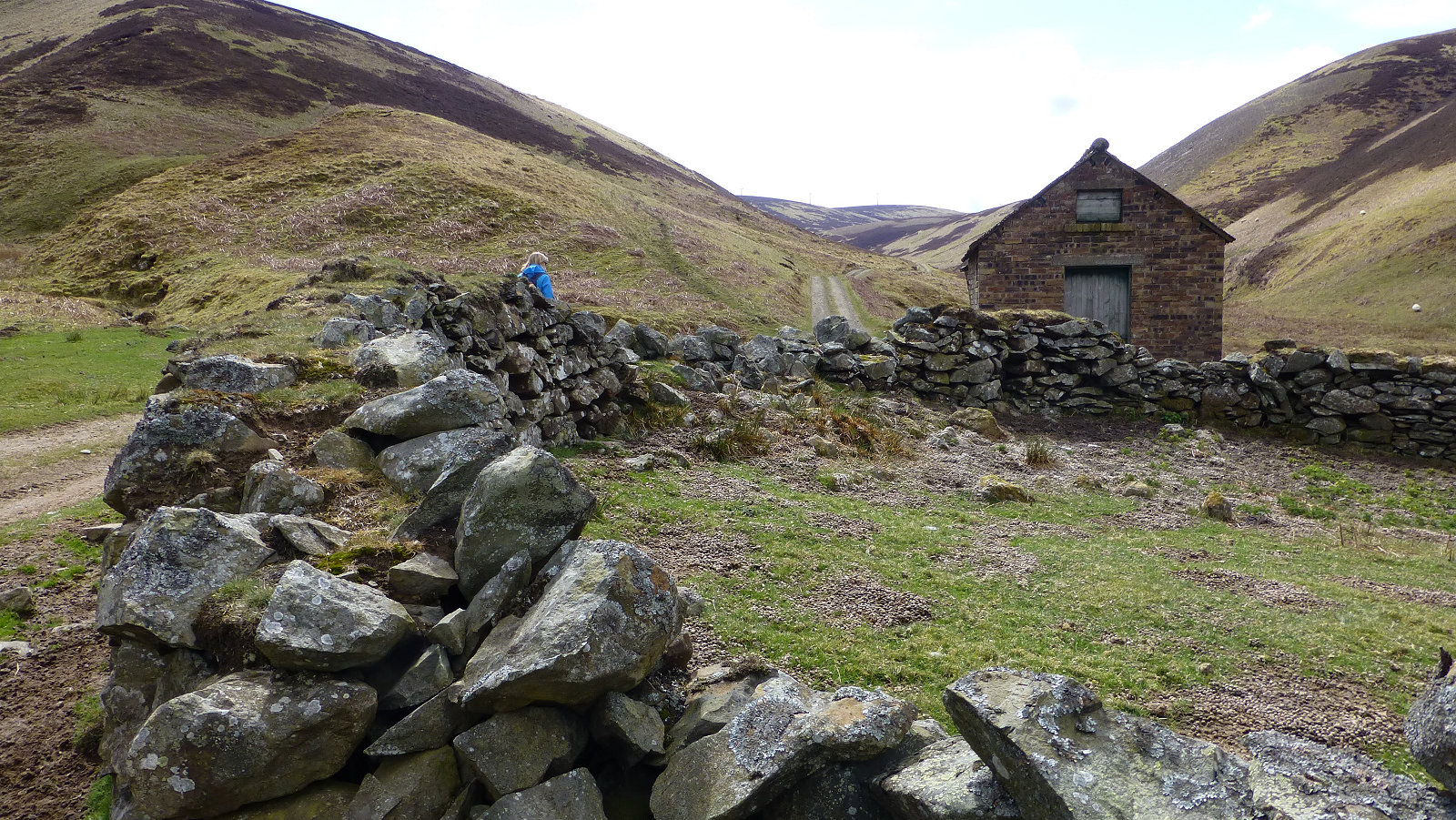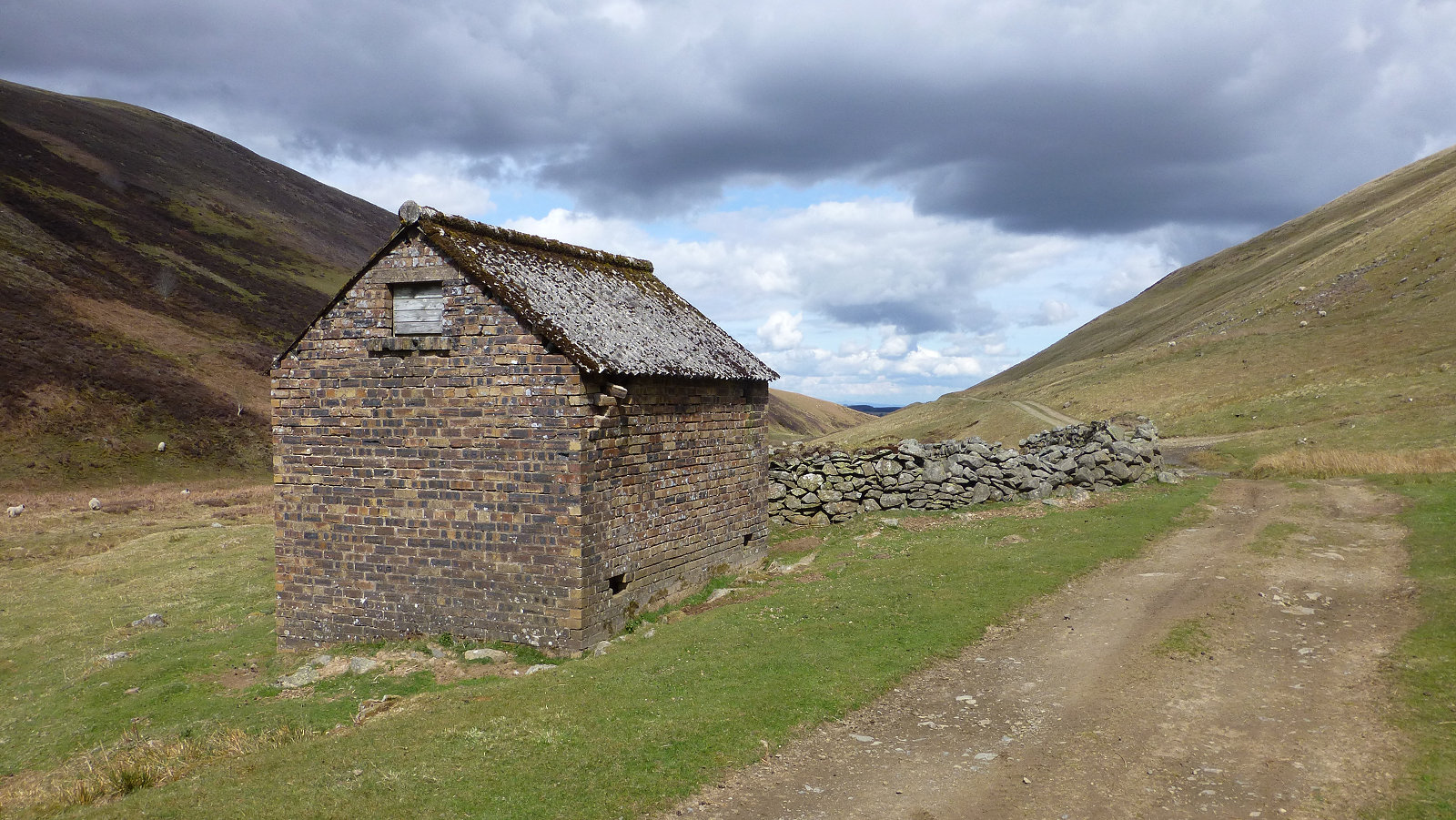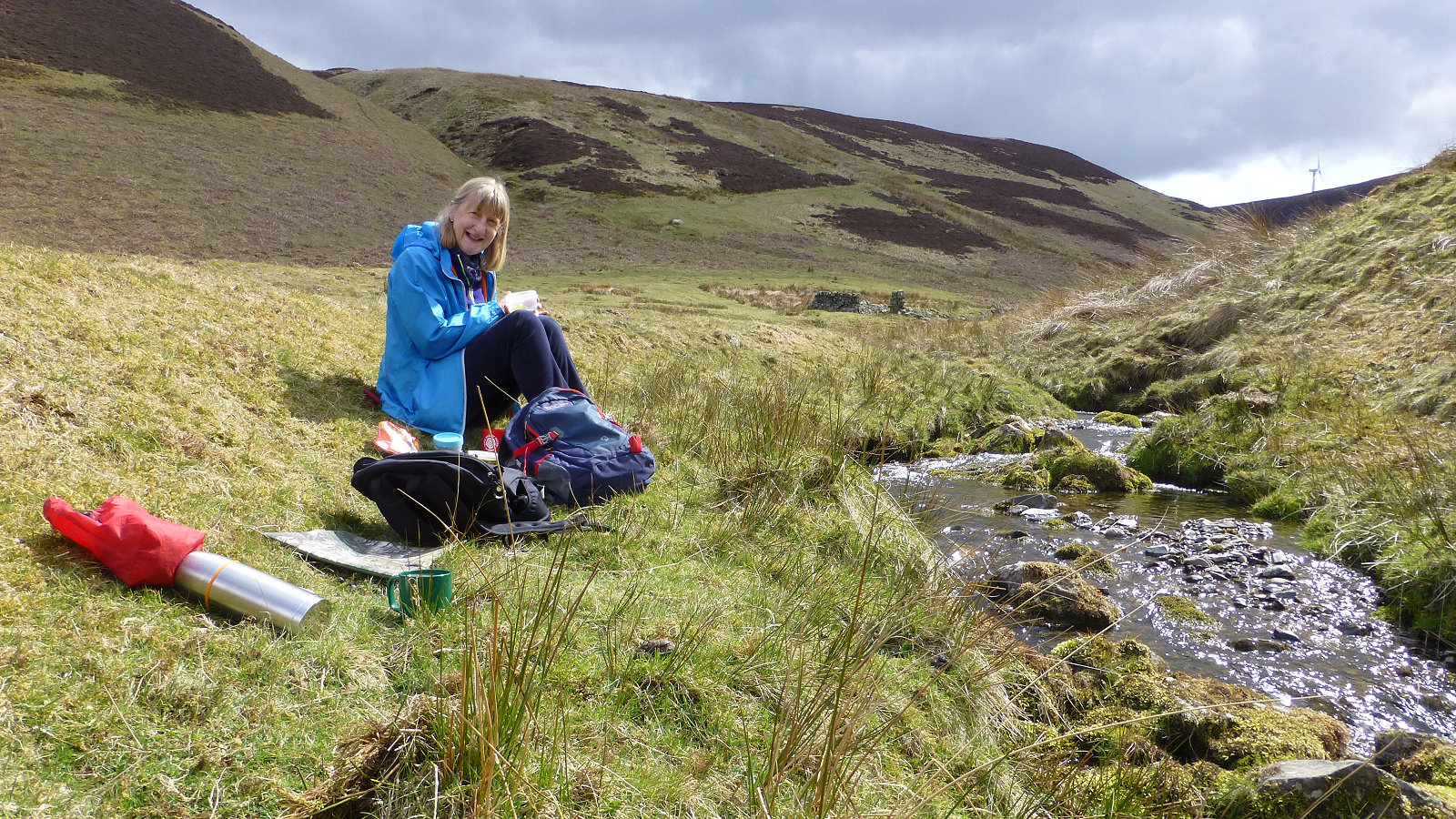Sunday 2nd May, the start of a new Turf round, but unfortunately, while I would happily have been out turfing, other commitments sometimes take precedence and our plan today was for a walk in the Moorfoot Hills above Gladhouse Reservoir. To be honest, I don’t mind not turfing, it’s good to have a break from taking zones when you can simply enjoy the scenery, the bird life and the delightful company of Cathryn, my wife. And there’s always that picnic lunch we carried to look forward to scoffing at the end.
We parked the car at the small parking area beside Gladhouse Reservoir and was lucky to get a space, just timing our arrival to grab the vacant space left by a departing vehicle. It was quite cold and windy outside the car but we soon warmed up as we followed the tarmac road towards Moorfoot Farm. There the road turns to rough gravel, very hard underfoot and we were both glad we had walking boots on. Once through the farm yard, the scenery opens up with wide open views of the Moorfoot Hills, with Bowbeat wind farm on the distant skyline, the turbine blades revolving lazily in the wind, though a few standing stationary. We were surrounded by fields of sheep, the ewes busily munching happily on the fresh grass while gangs of young lambs scampered back and forth around the field, occasionally stopping to give us the once over before running off again.
I like this time of the year. Breeding birds such as the lapwing have now set up territories and their distinctive warning cries were all around us as we walked along. The track soon drops down and across the youthful River South Esk, not much more than a small stream here and interesting to know that if you were drop a plastic duck in here and tell it where to go, it might with a lot of luck and if it was listening, bob along merrily all the way to the sea at Musselburgh, and perhaps beyond. I might try that one day. Needs to be a yellow plastic duck, mind you, or it doesn’t work, or so I’ve been told.
Once past Little Gladhouse cottage, the track begins to climb. We pass the ruins of Hirendean Castle, the remains of a peel tower from the 16th Century. There’s not much to see but worth the short climb for a closer look, if you’re passing. Once through the gate, the track starts to ascend steadily, working its way upstream. You can hear the burbling of the South Esk to your right. And if you pay attention, you might hear raven calling from the hill tops, see wheatear flitting from stone to stone, mipits (meadow pipits) all over the place, common sandpiper calling from the stream and much more besides. So, leave your music playing device at home.
With the track alternatively rising and falling, one minute we were cooking hot in the sunshine, the next minute freezing cold in the chilly wind. It was hats on, hats off, most of the way up the valley. There were quite a few large puddles along the track, left over from recent rains. Many of them were home to young tadpoles and I wished them the best of luck that their little pond would last long enough for them to mature and head for dry land.
A keen eye will spot logs placed across the river and if you look closely you may see a small cage in the centre with a metal contraption in the middle. It’s actually a spring trap for catching stoats. Also dotted along the side of the track are small wooden boxes. Not little houses for gnomes or fairies, as you would be forgiven to assume, but tunnel traps, also for catching stoats. Please leave them alone as this is a working farm and regardless of what our own values are regards wildlife it’s not our place to interfere.
It does not take long to complete the 3 mile walk to the head of the valley, there we found a sheltered spot by the stream and settled down to eat our packed lunch. However, just as I was about to start the second of my sandwiches – containing barbequed chicken, by the way – a short hail storm left us peppered with little white hail pellets, though they soon melted away. The sun even started to shine and we were able to stretch out and bask in the warm rays. Not that it lasted very long and as soon as were had scoffed all that was on offer, we started our return down the valley to the car before we got too chilled.
Back down at Little Gladhouse, a small family group were clay pigeon shooting, which was slightly disconcerting as we were quite close but it all seemed to be managed well. We also encountered a cyclist heading up the valley and I was much surprised by the steed we was riding, a vintage sit-up-and-beg enclosed-chain Sturmey Archer 3-speed hub-geared roadster from yester year. I think it might even have had rod-operated rim brakes. He certainly would not by cycling some parts of the track as the cobbles are the size of tennis balls and very loose. I’ve struggled to ride them on the Pugsley fat bike but he gets my admiration for trying.
Overall, I very pleasant day in the hills. A nice gentle walk, plenty of bird life and a nice picnic lunch with my wife. I’ve made a mental note to return on the bike and explore beyond the head of the valley, looking for any trails that might take me up to the wind farm. There’s also a great big erratic bloulder at the top of one of the side streams I want to check out. Until next time.
Copyright ©2021 Gary Buckham. All rights reserved.






